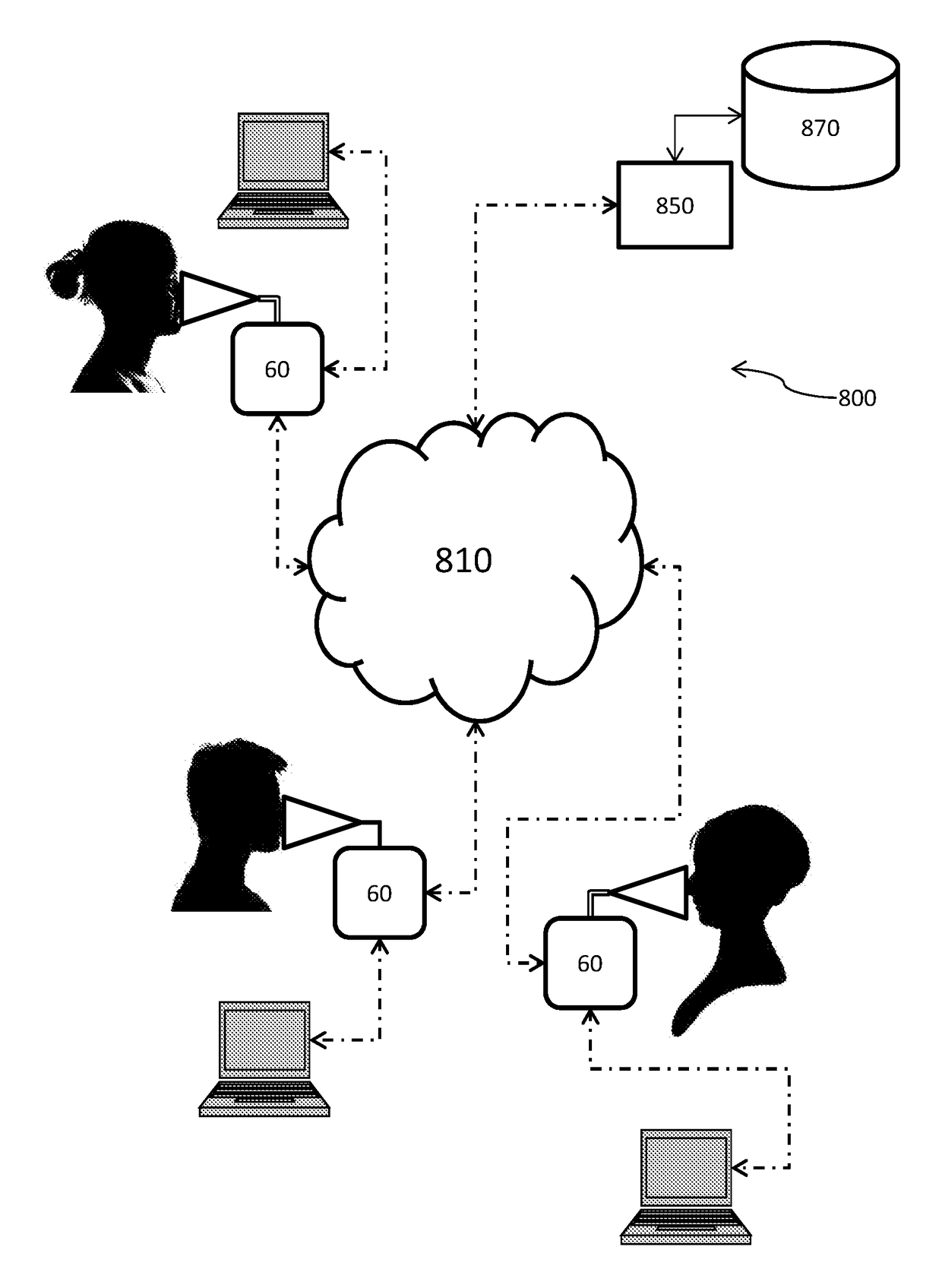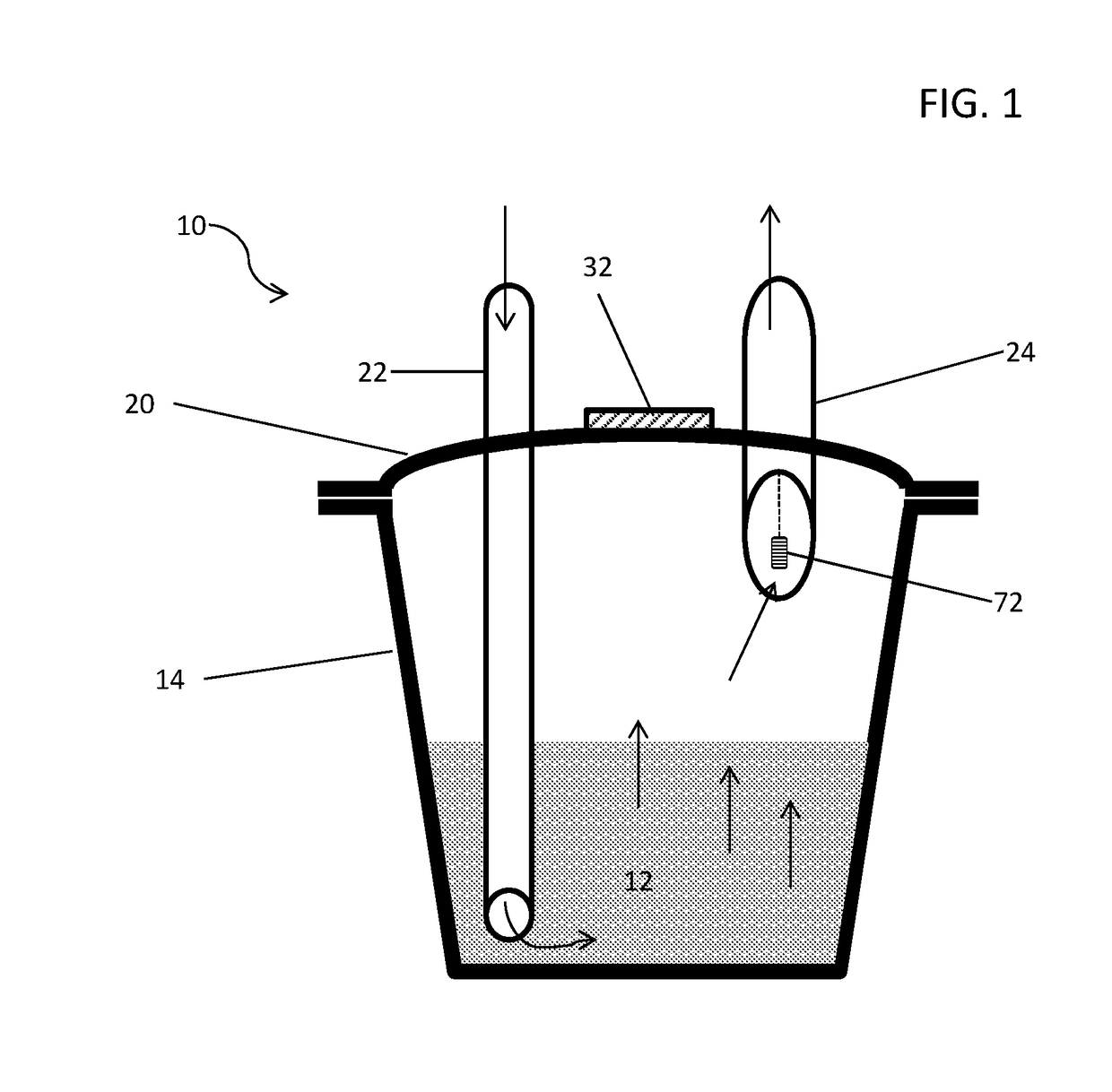Apparatus, method, and system for testing human olfactory systems
a technology of olfactory system and apparatus, applied in the field of apparatus, method and system for testing human olfactory sensory system functions, can solve the problems of prior art failing to provide, teach or suggest such a system and corresponding methods, and achieve the effect of rapid screening and comparison of test subjects
- Summary
- Abstract
- Description
- Claims
- Application Information
AI Technical Summary
Benefits of technology
Problems solved by technology
Method used
Image
Examples
Embodiment Construction
[0033]The present invention provides an apparatus, method, and system for standardized testing of human olfactory system functions. The invention includes an automated, standardized odor-delivery cartridge and odorant concentration measurement and calibration system for use with a testing apparatus having a controller for running the test sequence and capturing user input, with calibrated air flow or adapted to be connected with a smartphone or tablet computer or other computing device through a module. Preferably, the apparatus includes a photoionization detector (PID) to measure and / or calibrate the odor delivery cartridge. The apparatus is in electronic communication with at least one server computer and at least one database, preferably within a cloud-based computing network for providing real-time or near-real-time analysis of the data.
[0034]The prior art is limited regarding a standardized automated device, standardized odorants, method, or system for assessing overall olfacto...
PUM
 Login to View More
Login to View More Abstract
Description
Claims
Application Information
 Login to View More
Login to View More - R&D
- Intellectual Property
- Life Sciences
- Materials
- Tech Scout
- Unparalleled Data Quality
- Higher Quality Content
- 60% Fewer Hallucinations
Browse by: Latest US Patents, China's latest patents, Technical Efficacy Thesaurus, Application Domain, Technology Topic, Popular Technical Reports.
© 2025 PatSnap. All rights reserved.Legal|Privacy policy|Modern Slavery Act Transparency Statement|Sitemap|About US| Contact US: help@patsnap.com



